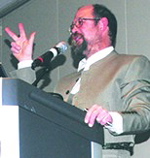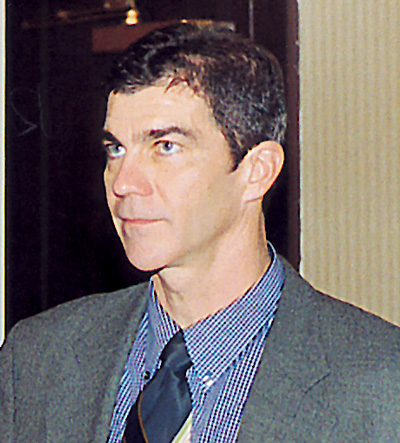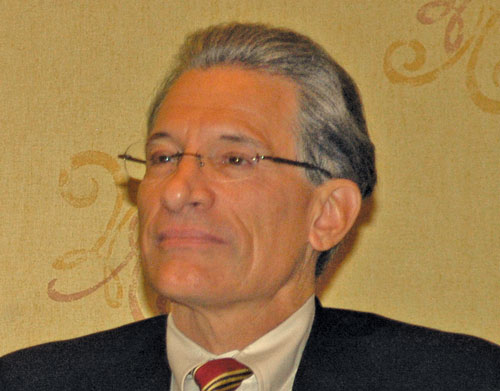The International Equine Veterinarian Hall Of Fame was established in 1997 to recognize equine practitioners who have contributed to furthering the knowledge and recognition of proper hoof care. Previously-elected members of the Hall voted on this year’s nominees.

Dr. Hans Castelijns was born in the Netherlands, raised in Spain and now lives and works as an equine veterinarian in Tuscany, Italy. Both a vet and farrier, Castelijns completed his farrier studies in 1989, followed by his veterinary studies in 1998, graduating cum laude with his thesis “Modern Farrier Techniques for the Prevention and Treatment of Lameness in Horses.”
He specializes in Thoroughbreds, Standardbreds, Arabians, jumpers, trotters, foals and yearlings. His primary areas of interest include foal development, diagnosis and treatment of lameness and preventive and therapeutic shoeing techniques.
Speaking in a half dozen languages, Castelijns is a sought-after speaker at many footcare conferences, including being one of the top-rated speakers at the 2009 International Hoof-Care Summit. A published author, Castelijns has written several articles for horse owners, farriers and veterinarians. He is also a member of the veterinary faculty at the University of Perugia.
He was unable to attend the induction ceremony.

Dr. Robert Hunt is a practicing surgeon with the Hagyard Equine Medical Institute in Lexington, Ky. Specializing in lameness surgery, the 1984 graduate of the Universit yof Georgia College of Veterinary Medicine has long had a keen interest in the equine foot.
Hunt has done considerable research and speaking on foal care, palmar foot pain, laminitis and a number of other hoof-related problems. He is an author of several research papers and numerous articles published in a wide range of equine magazines.
He is an excellent speaker and has spoken on many lameness and laminitis issues at a number of events, including several previous International Hoof-Care Summits.
At the induction ceremony, Hunt echoed the sentiments that he was humbled by the recognition of his practitioner peers.

Dr. James Orsini is one of the most active advocates of researching equine foot disease. He is the director of the Laminitis Institute at the University of Pennsylvania’s New Bolton Center, as well as an associate professor of surgery at the university. Since 2001, he has helped organize the biannual International Conference on Laminitis and Disease of the Foot. This meeting has brought together equine researchers, farriers and other equine practitioners.
One of the nominations for Orsini credited his close work with farriers, especially Rob Sigafoos, the former chief farrier at the New Bolton Center. Disappointed by the contemporary efforts to combat the dreaded disease, the two developed a strategy that gave birth to the Laminitis Institute.
A 1977 graduate of Cornell’s veterinary program, he has published numerous papers on laminitis and other equine issues. Orsini is currently researching cryotherapy with Australian researcher Dr. Andrew van Epps.
In a recorded video played during the induction ceremony, Orsini said, “Being recognized by my peers for my 30-some years of work with our equine friends truly warms my heart. Luckily, our Hall Of Fame doesn’t mean you have to retire. I feel like my work has only just begun.” Orsini added that he also takes pride in his efforts in bringing veterinarians and farriers together for the betterment of the horse.
Having passed away in 2005, Dr. Wolfgang Otto Sack was nominated for his contributions to research and education of equine veterinarians at Cornell University in Ithaca, N.Y. He has had a powerful impact on the modern understanding of the equine leg and foot.
A prolific writer, Sack published many scientific articles on equine anatomy and locomotion, as well as several textbooks. His book, A Textbook of Veterinary Anatomy, is still used in many veterinary schools.
Passionate about education, he encouraged veterinarians and farriers to understand overall equine anatomy and its effect on quality hoof care.
One of the people who nominated Sack, a fellow Hall Of Famer, credits him as “being one of the best teachers I ever had” and “solely responsible for my continuing interest in equine anatomy and physiology.”







Post a comment
Report Abusive Comment